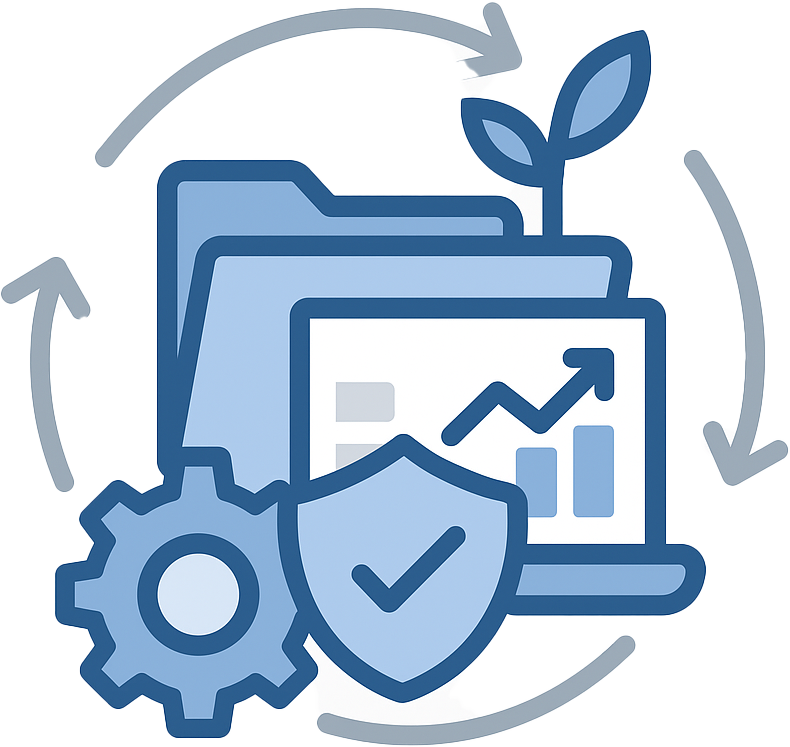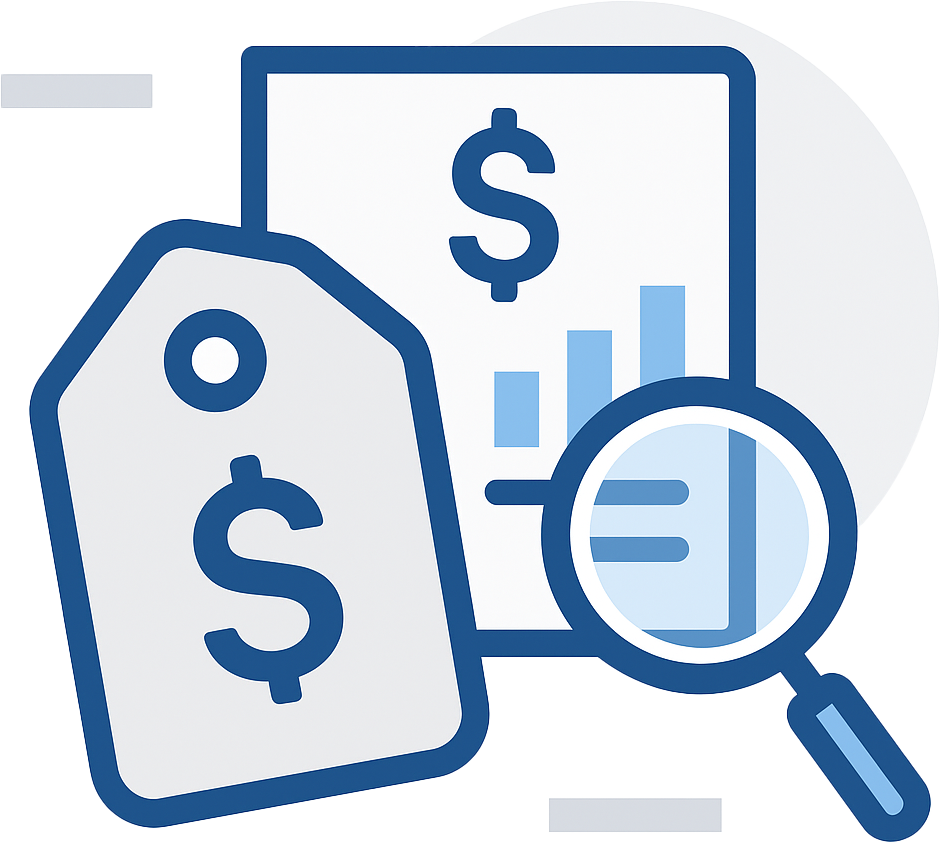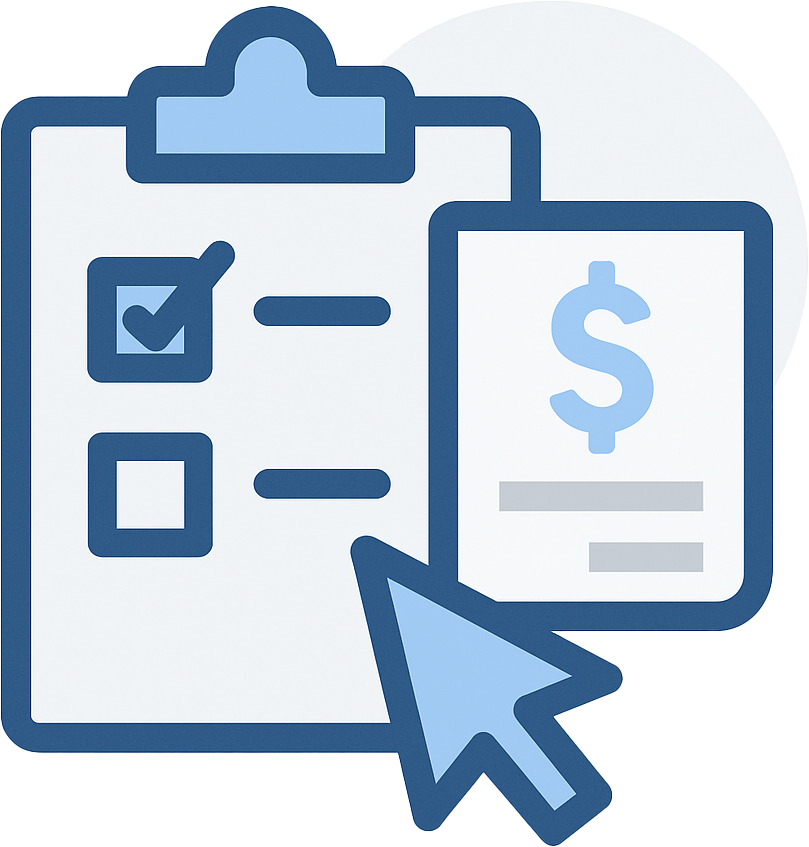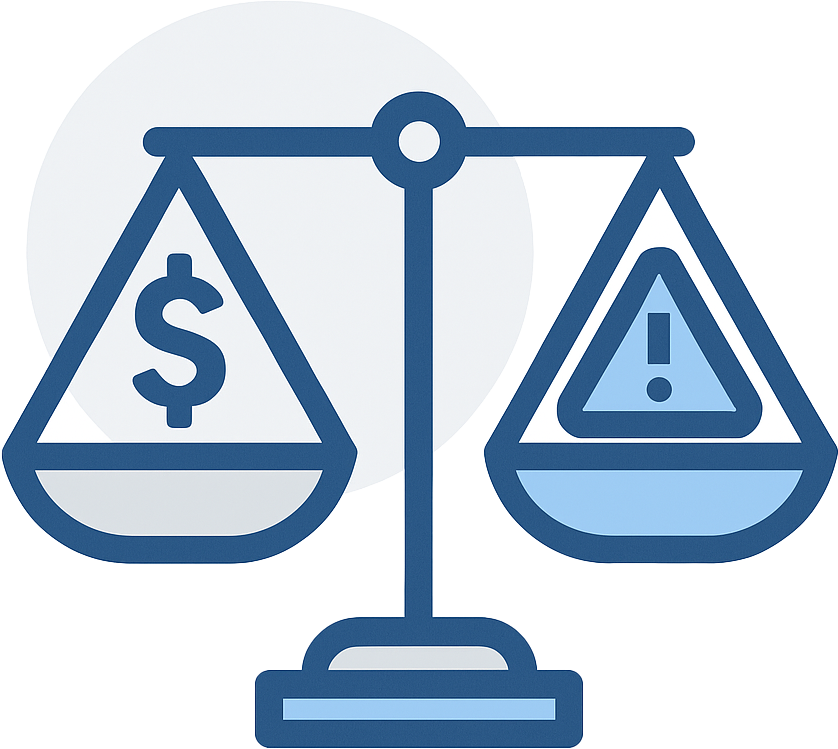Learn why a Phase I Environmental Site Assessment is vital to understand for those in the Mergers & Acquisitions space.
When it comes to buying, investing in, or absorbing businesses, one of the most commonly overlooked elements of the process is the need for a Phase I Environmental Site Assessment on properties either being purchased, leased, or otherwise used.
Over the years, we've worked extensively for organizations within the M&A industry, ranging from large investors to smaller capital firms, and we find the need to educate our customers on the reasons why a Phase I ESA isn't just a checkmark on a list of requirements - it's a valuable tool in the negotiating and planning process.
M&A firms place (or should) value on the Phase I ESA process.
With a Phase I Environmental Site Assessment, investors can easily do a number of things, all while protecting their investments and business associations. Having said that, the following items are gross oversimplifications about the Phase I ESA process. Without getting deep into CERCLA Liability, what All Appropriate Inquiries means, and other very specific aspects of the Phase I ESA process, we want to touch on some high-level concepts and misconceptions we commonly run across.
Conversely here are a few articles which you may find helpful on this area:
A Phase I ESA on Land Purchases
When anyone buys land, they become the owner of that piece of property, meaning they inherit the good, the bad, and the ugly. If you're buying a property that has contributed to contamination or is contaminated, those problems become your problems... unless you go through the Phase I ESA process.
Again as we've stated above this is a gross oversimplification, but the purpose of a Phase I ESA is to establish a baseline at the property, identify past usage and potential sources of contamination, and give you powerful intelligence regarding the piece of property that you (or your company) are becoming the owners of. This allows you to (in a sense) avoid the responsibility and liability that comes with purchasing a piece of property that was, is, or could impact contamination at the property, and regarding adjacent properties. Since environmental clean-up costs can be tens to hundreds of thousands of dollars or more for small properties, you can see how a Phase I ESA can provide you a sort of "insurance".
Not only that, but a Phase I ESA can help to identify what you can, and cannot do at a piece of property. Maybe your real estate investigations haven't uncovered details on engineering controls or restrictions placed on the property, such as digging and disturbing soil, or restrictions on wells and groundwater usage, or even the possibility of harmful vapors.
So a Phase I ESA provides you a bit of insurance preventing extremely costly clean-ups and with some guidance about what you can (and can't) do at a piece of property. Considering that your liability protection is contingent on not only getting a Phase I ESA done by the book, but also that you, as the property owner/user, continue to adhere to any restrictions or controls placed on the property, understanding the past use, and what can and can't happen in the future is necessary for that continued liability protection.
This goes for tenets, too. If you're leasing a piece or property, building, etc., to a tenet, and they do something that goes against restrictions on the property, you again could be left holding the bag since you are the property owner.
.webp?width=750&height=486&name=phase_i_esa%20(3).webp)
Phase I ESA for Property Lessees / Tenets
Here's a pretty common thing we hear - we aren't buying this property, we don't need a Phase I ESA. Technically, that's correct. As a business practice, it's a mindset that can be extremely costly.
When you start operating a business, especially one that could be construed as having detrimental impacts on the environment, such as dry cleaners, car washes, maintenance facilities, industrial operations, etc., understanding what was at a property prior to your business can help you once you decide to either move your operations or close your business down.
We bring this up because this is a real scenario we come across frequently. Usually, we get phone calls from exasperated business owners, financers, etc., who are dealing with landlords accusing them of contaminating their property. Without that baseline assessment (ie, a Phase I ESA), it's hard (sometimes impossible and/or extremely costly) to prove that your business wasn't responsible.
Let's say you lease a small industrial space to operate a print shop, run it for a few years, and decide, for whatever reason, the space is no longer suitable for your needs. After you leave, the landlord (again for whatever reason) gets a Phase I ESA (or another form of environmental due diligence) completed, which points to the past usage of the property (including your operation and everyone who came prior) as being potential sources of contamination. Maybe the prior operation was some type of fabrication facility, that used various solvents and chemicals, but improperly disposed of them on-site. Maybe your business uses the same type of solvents and chemicals.
How are you going to be able to prove that the bad stuff dumped into the hole in the ground behind the building was from the last guy, not you? The answer is complicated, and potentially extremely expensive.
Here's some information that may be helpful as well:
.webp?width=750&name=phase_i_esa%20(2).webp)
So why get a Phase I ESA if you're in the M&A industry?
Generally, we tell businesses operating in this space a Phase I ESA is a good business practice for three reasons:
- If you're buying property, it is the primary way in the US to obtain liability protection with regards to contamination. Since on (and off) site clean-up costs regarding environmental contamination can be extremely expensive, a Phase I ESA provides a bit of insurance against future issues.
- If you're using a piece of property, the Phase I ESA process may help to shine some light on what you can and can't do there. This is not only good information for you, the property owner but good information for any possible tenant or user of the property down the road. Remember, liability protection only works if the property is used in accordance with controls or restrictions on-site. If you were to dig a foundation for a new building, dig a well, or your tenet was to do something else which is outside of the restrictions placed on the property, you could void your liability protection. The Phase I ESA helps you establish some rules moving forward with regards to what you can use your property for.
- If you're leasing property, it helps you establish a baseline at the property, especially when it comes to industrial or highly scrutinized commercial facilities (gas stations, car washes, dry cleaners, etc.). The Phase I ESA helps you delineate what came before compared to what you will be doing on-site. While this isn't the intended goal of a Phase I ESA, it's a highly defensible process that gives you information and leverage should you need to exit a property for whatever reason.
Here are some quick additional articles on the subject:
We're buying/leasing lots of properties, doing dozens of Phase I ESAs is too costly!
This is a pretty common thing we hear across the board from investors and others within the M&A industry, and we get it.
If you're looking to obtain 100 properties, or a business operating at 100 properties, or any combination thereof, doing 100 Phase I ESAs may be a very costly proposition. Let's say each Phase I ESA costs $2,000, you could be looking at a $200,00 due diligence bill!
Again, we get it. Everyone is cost conscious, and everyone needs to make sound fiscal decisions. However, from our experience, the numbers just don't add up. When you have numerous acquisitions or other large-scale projects, spending an extra $2,000 per property is often a drop in the total budget. Considering that each Phase I ESA is (in a sense) a piece of insurance against future problems, it's one of the cheapest and longest-lasting "policies" you can buy.
Consider this - your firm is obtaining a business with 100 locations, some of which own property, some of which lease property. At $2,000 a piece for a Phase I ESA, you're looking at spending $200,000 extra on the project. That's not an insignificant amount of money!
Let's say that out of these 100 locations, 10% of them have conditions that warrant further investigation (in the form of a Phase II ESA). Phase II costs can range between a few thousand to $100,000+, but in this case let's say they cost a nice, round $10,000. Out of those 100 locations, let's say 10% of them need further investigation. You're now looking at $300,000 in due diligence costs!
Let's now say 3 of these 100 sites actually is contaminated thanks to a leaking, underground fuel oil tank, and some type of clean-up does need to occur. Now you have the knowledge to either price this acquisition accordingly, taking clean-up costs into consideration, or, you may not want to acquire these properties at all! It all depends. With the average costs of a single tank removal and clean-up costs being well over $100,000 dollars (according to a 2007 survey among state waste management officials, I'm sure costs have risen significantly since then 15 years ago, let's call them $150,000 in today's dollars), you just saved your firm hundreds of thousands of dollars, plus hours of headaches and hassles dealing with environmental agencies and clean up contractors.
Let's do the math - you've spent $300,000 on liability protection, and dodged a $450,000+ bill for clean-up costs at a handful of properties. After all, you haven't purchased the properties, so the land isn't yours yet, meaning the clean-up costs aren't yours. Maybe you ask for $600,000 off the acquisition price because of the need to address this, maybe you decide not to buy one or more specific properties, or maybe you make the current owner clean it up pre-acquisition. Regardless, you've spent $300,000 on due diligence and have outstanding protection for this entire acquisition with regards to environmental liabilities, and you've dodged $450,000+ in clean-up costs. You ended up saving lots of money!
Now let's throw a worst-case scenario example into this mix - suppose 5 years post-acquisition, one of your properties next to a creek starts to see evidence of heating oil seeping through ground soils, following topography, and leaving an oil sheen on this waterbody. The prior owner buried a metal heating oil tank, never registered it, and there was absolutely no physical or documented evidence of it.
In this instance, your Phase I ESA would protect you from the investigation and remediation costs, especially with regards to off-site contamination or cleaning up public water bodies. Let's say, to be conservative, this has saved you half a million dollars because you have documented proof that you did your environmental due diligence, it's not your tank, and you didn't know about it.
At this point, you've spent $300,000 in due diligence costs, but have saved close to a million dollars overall. That's a pretty great deal!
While we're on the topic of costs, here are some helpful articles
.webp?width=750&name=phase_i_esa%20(1).webp)
I've never had an issue with a Phase I ESA regarding acquisitions.
Here's where customers say - we've never had an issue with contamination, that $300,000 is not a smart fiscal decision. To those of your out there saying that, that's great, and you've done well! We've been involved in numerous projects where dozens of Phase I ESAs occur at dozens of locations, and they're all pristine, perfect properties.
However, we've been involved in cases where numerous properties are contaminated or may be contaminated. We've been involved in acquisitions where previous tenets had buried unregistered underground storage tanks or previous land/business owners have outright lied about past environmental issues.
What we commonly see, instead of investors completely skipping the Phase I ESA process, is to get a handful of Phase I's done, which in our opinion is like buying inadequate health insurance. It won't cover enough to actually be useful.
Using the same scenario as above, maybe you elect to only get 5% of your potential properties inspected. You spend $10,000 on Phase I ESAs at 5 properties, that's good enough, right?
Let's again say 5 years later heating oil again starts to bleed through ground soil into a creek. In this instance, there was no Phase I ESA, meaning you're the guilty party, so get your credit card out because you'll be on the hook for those investigations and clean-up costs.
Now let's say you're so jaded by the expensive experience that you've decided to sell this portion of your overall portfolio, and all 100 properties are being sold. A potential purchaser decides to get all your properties inspected through the Phase I ESA process, and finds those 3 properties we mentioned above needing remediation work. They're either going to make you clean them up, ask for money off the purchase price or won't want to obtain those properties. Assuming they want the properties, you're looking at a few hundred thousand dollars in clean-up costs, or, lowering your asking price by a few hundred thousand dollars.
Let's do the math! You spent $10,000 dollars because you either didn't understand the value of a Phase I ESA, or you were just being cheap. You then spent $500,000 on clean-up costs regarding the leaking heating oil tank impacting the creek. You then are forced to clean up three properties with tank removals each costing $150,000+ each. You managed to save $290,000 dollars on your environmental due diligence (which is substantial) but ended up spending $950,000+ on investigations and remediations costs.
I may not be a rocket scientist, but I do know that $300,000 is a lot less than $950,000. Can you still say that $10,000 was money well spent?!
Of course, our professional opinion is biased because we make money as environmental consultants. However, we do hear from current and potential customers all the time, big and small, who "cheaped out" and never did the proper environmental due diligence. If I had a dollar for everyone I've talked to on the phone or have emailed during my professional career, who's facing massive bills and/or liability because of a contaminated property, either prior to selling or after evidence comes to light of contamination impacting the local area, I would have already retired.
Talk to a land use attorney, take a quick course on the Phase I ESA standard with ASTM, or speak to some remediation experts who are used to dealing with large acquisitions - this kind of worst-case scenario happens all the time. Again, if you've been on the opposite side of the equation and have never had an issue, you are an exception, and quite frankly, extremely lucky.
.webp?width=750&name=phase_i_esa%20(4).webp)
Phase I ESA Providers to the M&A Industry
So to wrap this up, let's review this once more real quick.
- First and foremost, a Phase I ESA provides you protection against environmental liability and contamination clean-up costs. Compared to the extreme costs related to investigations and clean-ups, the relatively low cost of a Phase I ESA is peanuts. Additionally, compared to the high costs associated with acquiring organizations with numerous locations, or a single, large location, again the cost of a Phase I ESA is a drop in the bucket.
- A Phase I ESA can help to identify things you can and can't do on-site. We've talked to too many people who have bought first, asked later, and found out there are engineering restrictions and/or controls on a piece of property, preventing them from doing what they want with it. Maybe you can't dig a foundation, a well, install subsurface tanks, or open a school on the property. A Phase I ESA can help identify those restrictions.
- A Phase I ESA can help you negotiate with regards to pricing and potentially troublesome sites. You can ask for a discount, or outright avoid purchasing properties that are contaminated. Regardless of how you use a Phase I ESA as leverage, you have a powerful tool at your disposal to make some demands of the seller.
- A Phase I ESA can help you if you lease a piece of property, by establishing a baseline and assigning impacts and responsibility on previous property users. Without establishing a baseline, when you exit a leased property, you could be at the whim or a landlord hoping to squeeze money for something you didn't do.
No matter how you cut it, getting a Phase I ESA is a good deal. They're relatively cheap and easy to get and provide you with a useful piece of protection, ensuring your acquisition makes financial sense now and into the future.
Before we go, here are some additional Phase I ESA articles that you may find helpful.
Interested in learning more? We'd love to talk. As members of various M&A industry groups, and with numerous clients within that arena, we understand your needs, more than "the local company" that only services their town, county, or state. With flexibility, professionalism, and experience, our staff of environmental professionals can provide Phase I ESA service across the map for a variety of locations and properties. To learn more, reach out to us here at RMA by either filling out the form below, click here to contact us, calling us at 888-RMA-0230, or sending us an email at info@rmagreen.com.











.webp?width=750&height=486&name=phase_i_esa%20(3).webp)
.webp?width=750&name=phase_i_esa%20(2).webp)
.webp?width=750&name=phase_i_esa%20(1).webp)
.webp?width=750&name=phase_i_esa%20(4).webp)